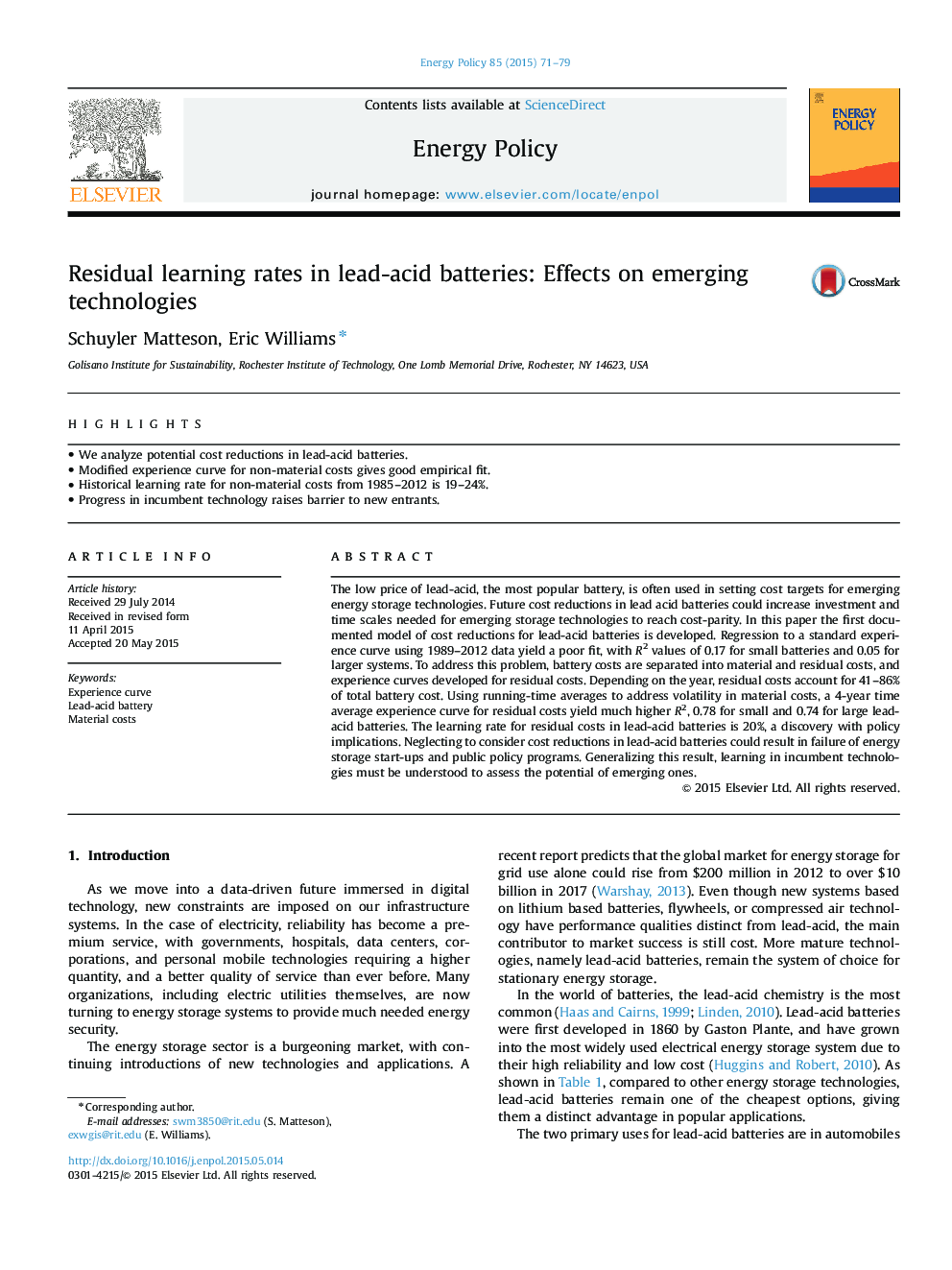| کد مقاله | کد نشریه | سال انتشار | مقاله انگلیسی | نسخه تمام متن |
|---|---|---|---|---|
| 7400865 | 1481273 | 2015 | 9 صفحه PDF | دانلود رایگان |
عنوان انگلیسی مقاله ISI
Residual learning rates in lead-acid batteries: Effects on emerging technologies
ترجمه فارسی عنوان
نرخ یادگیری باقی مانده در باتری های سرب اسید: تاثیر در فن آوری های در حال ظهور
دانلود مقاله + سفارش ترجمه
دانلود مقاله ISI انگلیسی
رایگان برای ایرانیان
کلمات کلیدی
منحنی تجربه، باتری سربی - اسیدی، هزینه های مواد،
موضوعات مرتبط
مهندسی و علوم پایه
مهندسی انرژی
مهندسی انرژی و فناوری های برق
چکیده انگلیسی
The low price of lead-acid, the most popular battery, is often used in setting cost targets for emerging energy storage technologies. Future cost reductions in lead acid batteries could increase investment and time scales needed for emerging storage technologies to reach cost-parity. In this paper the first documented model of cost reductions for lead-acid batteries is developed. Regression to a standard experience curve using 1989-2012 data yield a poor fit, with R2 values of 0.17 for small batteries and 0.05 for larger systems. To address this problem, battery costs are separated into material and residual costs, and experience curves developed for residual costs. Depending on the year, residual costs account for 41-86% of total battery cost. Using running-time averages to address volatility in material costs, a 4-year time average experience curve for residual costs yield much higher R2, 0.78 for small and 0.74 for large lead-acid batteries. The learning rate for residual costs in lead-acid batteries is 20%, a discovery with policy implications. Neglecting to consider cost reductions in lead-acid batteries could result in failure of energy storage start-ups and public policy programs. Generalizing this result, learning in incumbent technologies must be understood to assess the potential of emerging ones.
ناشر
Database: Elsevier - ScienceDirect (ساینس دایرکت)
Journal: Energy Policy - Volume 85, October 2015, Pages 71-79
Journal: Energy Policy - Volume 85, October 2015, Pages 71-79
نویسندگان
Schuyler Matteson, Eric Williams,
